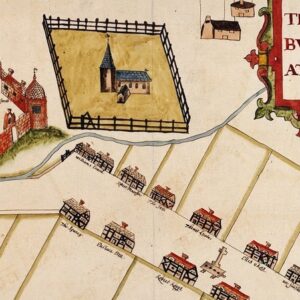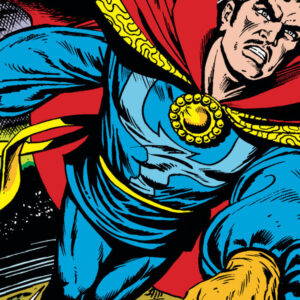
50 Great Classic Novels
Under 200 Pages
Getting You Through February
We are now past the mid-way point in February, which is technically the shortest month, but is also the one that—for me, anyway—feels the longest. Especially this year, for all of the reasons that you already know. At this point, if you keep monthly reading goals, even vague ones, you may be looking for few a good, short novels to knock out in an afternoon or two. Last year, I wrote about the best contemporary novels under 200 pages, so now I must turn my attention to my favorite short classics—which represent the quickest and cheapest way, I can tell you in my salesman voice, to become “well-read.”
A few notes: Because the “contemporary” list surveyed novels published since 1970 (inclusive), this list will define “classic” as being originally published before 1970. Yes, these distinctions are somewhat arbitrary, but one has to draw the line somewhere (though I let myself fudge on translation dates). I did not differentiate between novels and novellas (as Steven Millhauser would tell you, the novella is not a form at all, but merely a length), but let’s be honest with ourselves: “The Dead” is a short story, and so is “The Metamorphosis.” Sorry! I limited myself to one book by each author, valiantly, I should say, because I was tempted to cheat (looking at you Jean Rhys).
Most importantly for our purposes here: lengths vary with editions, sometimes wildly. I did not include a book below unless I could find that it had been published at least once in fewer than 200 pages—which means that some excellent novels, despite coming tantalizingly close to the magic number, had to be left off for want of proof (see Mrs. Dalloway, Black No More, Slaughterhouse-Five, etc. etc. etc.). However, your personal edition might not exactly match the number I have listed here. Don’t worry: it’ll still be short.
Finally, as always: “best” lists are subjective, no ranking is definitive, and I’ve certainly forgotten, or never read, or run out of space for plenty of books and writers here. And admittedly, the annoying constraints of this list make it more heavily populated by white and male writers than I would have liked. Therefore, please add on at will in the comments. After all, these days, I’m always looking for something old to read.
*
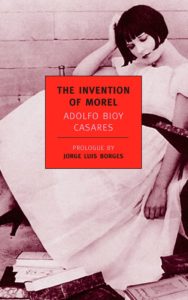
Adolfo Bioy Casares, tr. Ruth L.C. Simms, The Invention of Morel (1940) : 103 pages
Both Jorge Luis Borges and Octavio Paz described this novel as perfect, and I admit I can’t find much fault with it either. It is technically about a fugitive whose stay on a mysterious island is disturbed by a gang of tourists, but actually it’s about the nature of reality and our relationship to it, told in the most hypnotizing, surrealist style. A good anti-beach read, if you plan that far ahead.
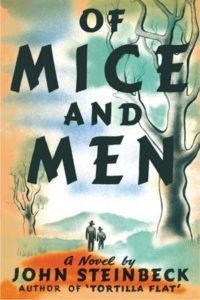
John Steinbeck, Of Mice and Men (1937) : 107 pages
Everybody’s gateway Steinbeck is surprisingly moving, even when you revisit it as an adult. Plus, if nothing else, it has given my household the extremely useful verb “to Lenny.”
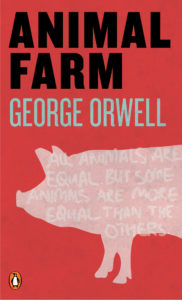
George Orwell, Animal Farm (1945) : 112 pages
If we didn’t keep putting it on lists, how would future little children of America learn what an allegory is? This is a public service, you see.
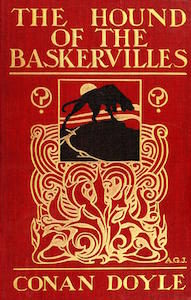
Sir Arthur Conan Doyle, The Hound of the Baskervilles (1902) : 112 pages
A people-pleaser, in more ways than one: Sherlock Holmes, after all, had been dead for years when his creator finally bent to public demand (and more importantly, the demand of his wallet) and brought him back, in this satisfying and much-beloved tale of curses and hellbeasts and, of course, deductions.
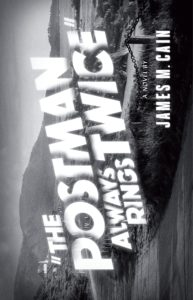
James M. Cain, The Postman Always Rings Twice (1933) : 112 pages
A 20th century classic, and still one of the best, most important, and most interesting crime novels in the canon. Fun fact: Cain had originally wanted to call it Bar-B-Q.

Nella Larsen, Passing (1929) : 122 pages
One of the landmarks of the Harlem Renaissance, about not only race but also gender and class—not to mention self-invention, perception, capitalism, motherhood and friendship—made indelible by what Darryl Pinckney called “a deep fatalism at the core.”
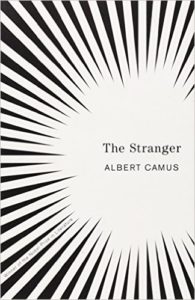
Albert Camus, tr. Matthew Ward, The Stranger (1942) : 123 pages
I had a small obsession with this book as a moody teen, and I still think of it with extreme fondness. Is it the thinking person’s Catcher in the Rye? Who can say. But Camus himself put it this way, writing in 1955: “I summarized The Stranger a long time ago, with a remark I admit was highly paradoxical: “In our society any man who does not weep at his mother’s funeral runs the risk of being sentenced to death.” I only meant that the hero of my book is condemned because he does not play the game.”
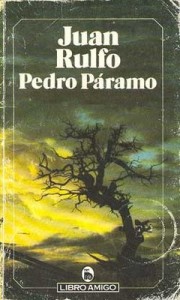
Juan Rulfo, tr. Margaret Sayers Peden, Pedro Páramo (1955) : 128 pages
The strange, fragmented ghost story that famously paved the way for One Hundred Years of Solitude (according to Gabriel García Márquez himself), but is an enigmatic masterpiece in its own right.
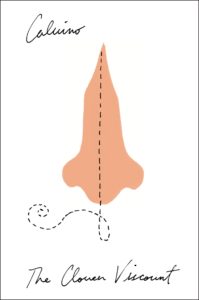
Italo Calvino, tr. Archibald Colquhoun, The Cloven Viscount (1959) : 128 pages
This isn’t my favorite Calvino, but you know what they say: all Calvino is good Calvino (also, I forgot him on the contemporary list, so I’m making up for it slightly here). The companion volume to The Nonexistent Knight and The Baron in the Trees concerns a Viscount who is clocked by a cannonball and split into two halves: his good side and his bad side. They end up in a duel over their wife, of course—just like in that episode of Buffy. But turns out that double the Viscounts doesn’t translate to double the pages.
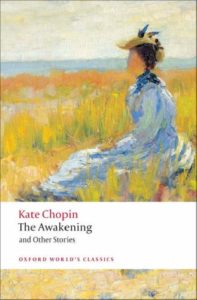
Kate Chopin, The Awakening (1899) : 128 pages
I know, I know, but honestly, this book, which is frequently taught in American schools as an example of early feminist literature, is still kind of edgy—more than 120 years later, and it’s still taboo for a woman to put herself and her own desires above her children. Whom among us has not wanted to smash a symbolic glass vase into the hearth?
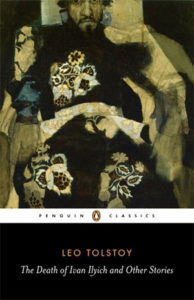
Leo Tolstoy, tr. Richard Pevear and Larissa Volokhonsky, The Death of Ivan Ilyich (1886) : 128 pages
Another classic—Tolstoy can do it all, long and short—particularly beloved by the famously difficult-to-impress Nabokov, who described it as “Tolstoy’s most artistic, most perfect, and most sophisticated achievement,” and explained the thrust of it this way: “The Tolstoyan formula is: Ivan lived a bad life and since the bad life is nothing but the death of the soul, then Ivan lived a living death; and since beyond death is God’s living light, then Ivan died into a new life—Life with a capital L.”
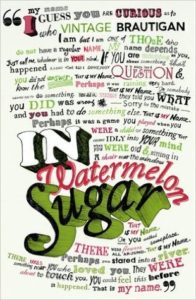
Richard Brautigan, In Watermelon Sugar (1968) : 138 pages
Brautigan’s wacky post-apocalyptic novel concerns a bunch of people living in a commune called iDEATH. (Which, um, relatable.) The landscape is groovy and the tigers do math, and the titular watermelon sugar seems to be the raw material for everything from homes to clothes. “Wherever you are, we must do the best we can. It is so far to travel, and we have nothing here to travel, except watermelon sugar. I hope this works out.” It’s all nonsense, of course, but it feels so good.
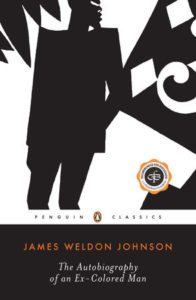
James Weldon Johnson, The Autobiography of an Ex-Colored Man (1912) : 140 pages
Another early novel on the subject of passing—originally published in 1912, then again under Johnson’s name in 1927—this one presented as an “autobiography” written by a Black man living as white, but uneasily, considering himself a failure, feeling until the end the grief of giving up his heritage and all the pain and joy that came with it.
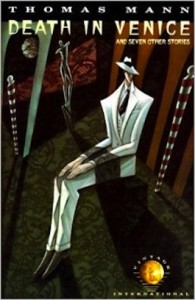
Thomas Mann, tr. Michael Henry Heim, Death in Venice (1912) : 142 pages
What it says on the tin—a story as doomed as Venice itself, but also a queer and philosophical mini-masterpiece. The year before the book’s publication, Mann wrote to a friend: “I am in the midst of work: a really strange thing I brought with me from Venice, a novella, serious and pure in tone, concerning a case of pederasty in an aging artist. You say, ‘Hum, hum!’ but it is quite respectable.” Indeed.

Shirley Jackson, We Have Always Lived in the Castle (1962) : 146 pages
If you’re reading this space, you probably already know how much we love this book at Literary Hub. After that excellent opening paragraph, it only gets better.

Christopher Isherwood, A Single Man (1964) : 152 pages
Isherwood’s miniature, jewel-like masterpiece takes place over a single day in the life of a middle-aged English expat (who shares a few qualities with Isherwood himself), a professor living uneasily in California after the unexpected death of his partner. An utterly absorbing and deeply pleasurable novel.
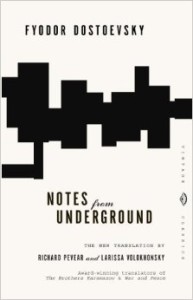
Fyodor Dostoevsky, tr. Richard Pevear and Larissa Volokhonsky, Notes from Underground (1864) : 154 pages
Probably the best rant ever passed off as literature. Doestoevsky’s first masterpiece has been wildly influential in the development of existential and dystopian storytelling of all kinds, not to mention in the development of my own high school misanthropy. Maybe yours, too? “It was all from ENNUI, gentlemen, all from ENNUI; inertia overcame me . . .” Actually, now I’m thinking that it might be a good book to re-read in pandemic isolation.
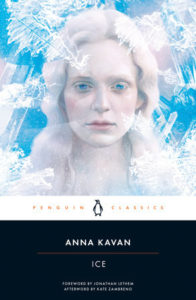
Anna Kavan, Ice (1967) : 158 pages
The narrator of this strange and terrifying novel obsessively pursues a young woman through an icy apocalypse. You might call it a fever dream if it didn’t feel so . . . cold. Reading it, wrote Jon Michaud on its 50th anniversary, is “a disorienting and at times emotionally draining experience, not least because, these days, one might become convinced that Kavan had seen the future.” Help.
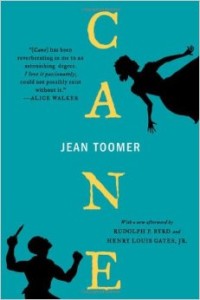
Jean Toomer, Cane (1923) : 158 pages
Toomer’s experimental, multi-disciplinary novel, now a modernist classic, is presented as a series of vignettes, poems, and swaths of dialogue—but to be honest, all of it reads like poetry. Though its initial reception was uncertain, it has become one of the most iconic and influential works of 1920s American literature.

J.G. Ballard, The Drowned World (1962) : 158 pages
Only in a Ballard novel can climate change make you actually become insane—and only a Ballard novel could still feel so sticky and hot in my brain, years after I read it in a single afternoon.
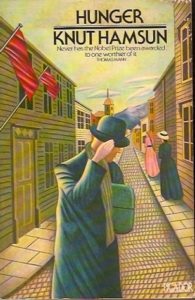
Knut Hamsun, tr. Sverre Lyngstad, Hunger (1890) : 158 pages
The Nobel Prize winner’s first novel is, as Hamsun himself put it, “an attempt to describe the strange, peculiar life of the mind, the mysteries of the nerves in a starving body.” An modernist psychological horror novel that is notoriously difficult, despite its length, but also notoriously worth it.

James Baldwin, Giovanni’s Room (1956) : 159 pages
Still my favorite Baldwin, and one of the most convincing love stories of any kind ever written, about which there is too much to say: it is a must-read among must-reads.

Willa Cather, O Pioneers! (1913) : 159 pages
A mythic, proto-feminist frontier novel about a young Swedish immigrant making a home for herself in Nebraska, with an unbearably cool and modern title (in my opinion).
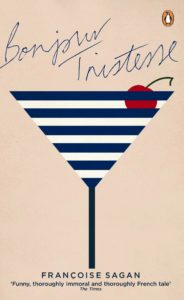
Françoise Sagan, tr. Irene Ash, Bonjour Tristesse (1955) : 160 pages
Sagan’s famously scandalous novel of youthful hedonism, published (also famously) when Sagan was just 19 herself, is much more psychologically nuanced than widely credited. As Rachel Cusk wrote, it is not just a sexy French novel, but also “a masterly portrait that can be read as a critique of family life, the treatment of children and the psychic consequences of different forms of upbringing.” It is a novel concerned not only with morals or their lack, but with the very nature of morality itself.

Herman Melville, Billy Budd, Sailor (1924) : 160 pages
Bartleby may be more iconic (and more fun), but Billy Budd is operating on a grander scale, unfinished as it may be.
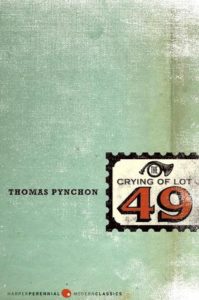
Thomas Pynchon, The Crying of Lot 49 (1966) : 160 pages
Everyone’s gateway to Pynchon, and also everyone’s gateway to slapstick postmodernism. Either you love it or you hate it!
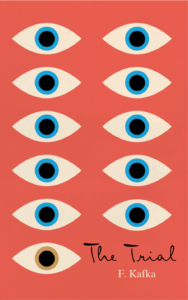
Franz Kafka, tr. Willa and Edwin Muir, The Trial (1925) : 160 pages
Required reading for anyone who uses the term “Kafkaesque”—but don’t forget that Kafka himself would burst out laughing when he read bits of the novel out loud to his friends. Do with that what you will.
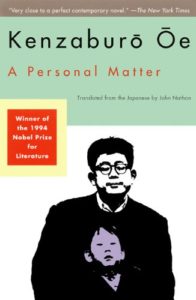
Kenzaburo Oe, tr. John Nathan, A Personal Matter (1968) : 165 pages
Whew. This book is a lot: absolutely gorgeous and supremely painful, and probably the Nobel Prize winner’s most important.
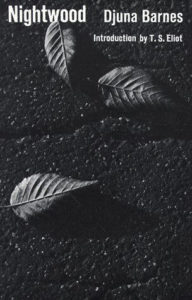
Djuna Barnes, Nightwood (1936) : 170 pages
In his preface to the first edition, T.S. Eliot praised “the great achievement of a style, the beauty of phrasing, the brilliance of wit and characterisation, and a quality of horror and doom very nearly related to that of Elizabethan tragedy.” It is also a glittering modernist masterpiece, and one of the first novels of the 20th century to explicitly portray a lesbian relationship.
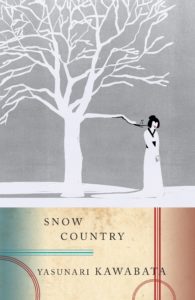
Yasunari Kawabata, tr. Edward G. Seidensticker, Snow Country (1937) : 175 pages
A story of doomed love spun out in a series of indelible, frozen images—both beautiful and essentially suspicious of beauty—by a Nobel Prize winner.

Jean Rhys, Wide Sargasso Sea (1966) : 176 pages
This novel, Rhys’s famous riposte to one of the worst love interests in literary history, tells the story of Mr. Rochester from the point of view of the “madwoman in the attic.” See also: Good Morning, Midnight (1939), which is claustrophobic, miserable, pointless, and damn fine reading.
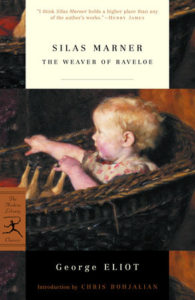
George Eliot, Silas Marner (1861) : 176 pages
Like Middlemarch, Silas Marner is exquisitely written and ecstatically boring. Unlike Middlemarch, it is quite short.

Muriel Spark, The Girls of Slender Means (1963) : 176 pages
The girls of Spark’s novel live in the May of Teck Club, disturbed but not destroyed by WWII—both the Club, that is, and the girls. “Their slenderness lies not so much in their means,” Carol Shields wrote in an appreciation of the book, “as in their half-perceived notions about what their lives will become and their overestimation of their power in the world. They are fearless and frightened at the same time, as only the very young can be, and they are as heartless in spirit as they are merry in mode.” Can’t go wrong with Muriel Spark.
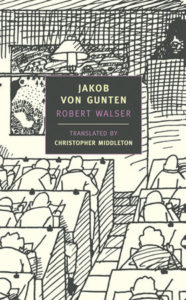
Robert Walser, tr. Christopher Middleton, Jakob von Gunten (1969) : 176 pages
Walser is a writer’s writer, a painfully underrated genius; this novel, in which a privileged youth runs off to enroll at a surrealist school for servants, may be his best.
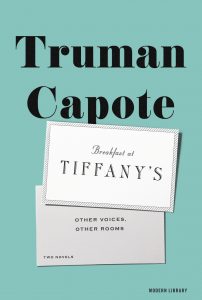
Truman Capote, Breakfast at Tiffany’s (1958) : 179 pages
Read for proof that Holly Golightly was meant to be a Marilyn.
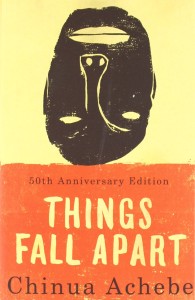
Chinua Achebe, Things Fall Apart (1958) : 181 pages
A powerful, clear-eyed, and haunting novel, which at the time of its publication was transgressive in its centering of African characters in all their humanity and complexity, and which paved the way for thousands of writers all over the world in the years to follow.
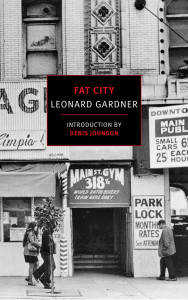
Leonard Gardner, Fat City (1969) : 183 pages
Universally acknowledged as the best boxing novel ever written, but so much more than that: at its core, it’s a masterpiece about that secret likelihood of life, if not of literature: never achieving your dreams.
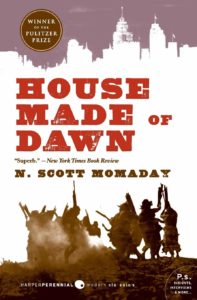
N. Scott Momaday, House Made of Dawn (1968) : 185 pages
House Made of Dawn, Momaday’s first novel, was awarded the Pulitzer Prize and is often credited with ushering in the Native American Renaissance. Intricate, romantic, and lush, it is at its core about the creaking dissonance of two incompatible worlds existing in the same place (both literally and metaphysically) at the same time.
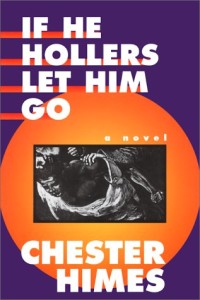
Chester Himes, If He Hollers Let Him Go (1945) : 186 pages
Himes’ first novel spans four days in the life of a Californian named Bob Jones, whose every step is dogged by racism. Walter Mosely called Himes, who is also renowned for his detective fiction, a “quirky American genius,” and also “one of the most important American writers of the 20th century.” If He Hollers Let Him Go, while not technically a detective story, is “firmly located in the same Los Angeles noir tradition as The Big Sleep and Devil in a Blue Dress,” Nathan Jefferson has written. “Himes takes the familiar mechanics of these novels—drinking, driving from one end of Los Angeles to another in search of answers, a life under constant threats of danger—and filters them through the lens of a black man lacking any agency and control over his own life, producing something darker and more oppressive than the traditional pulp detective’s story.”
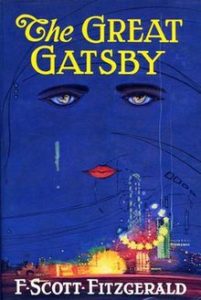
F. Scott Fitzgerald, The Great Gatsby (1925) : 189 pages
All my life I have wanted to scoff at The Great Gatsby. Usually, things that are universally adored are bad, or at least mediocre. But every time I reread it, I remember: impossibly, annoyingly, it is as good as they say.
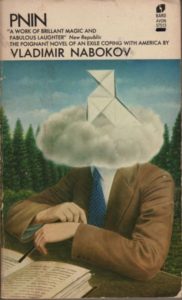
Vladimir Nabokov, Pnin (1957) : 190 pages
Still one of my favorite campus novels, and short enough to read in between classes.
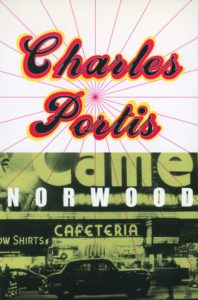
Charles Portis, Norwood (1966) : 190 pages
Portis has gotten a lot of (well-deserved) attention in recent years for True Grit, but his first novel, Norwood, is almost as good, a comic masterpiece about a young man traipsing across a surreal America to lay his hands on $70.
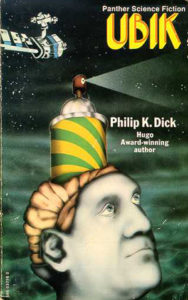
Philip K. Dick, Ubik (1969) : 191 pages
Do Androids Dream of Electric Sheep? and A Scanner Darkly have more mainstream name recognition (thank you Hollywood) but Ubik is Dick’s masterpiece, filled to the brim with psychics and anti-psis, dead wives half-saved in cold-pac, and disruptions to time and reality that can be countered by an aerosol you get at the drugstore. Sometimes, anyway.
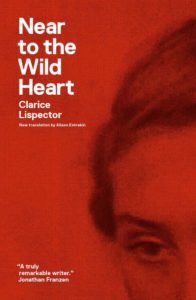
Clarice Lispector, tr. Alison Entrekin, Near to the Wild Heart (1943) : 192 pages
Lispector’s debut novel, first published in Brazil when she was only 19, is still my favorite of hers: fearless, sharp-edged, and brilliant, a window into one of the most interesting narrators in literature.
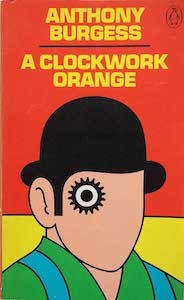
Anthony Burgess, A Clockwork Orange (1962) : 192 pages
This novel is probably more famous these days for the Kubrick film, but despite the often gruesome content, the original text is worth a read for the language alone.
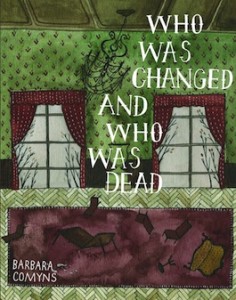
Barbara Comyns, Who Was Changed and Who Was Dead (1954) : 193 pages
Comyns is a criminally under-read genius, though she’s been getting at least a small taste of the attention she deserves in recent years due to reissues by NYRB and Dorothy. This one is my favorite, permeated, as Brian Evenson puts it in the introduction of my copy, with marvelousness, “a kind of hybrid of the pastoral and the naturalistic, an idyllic text about what it’s like to grow up next to a river, a text that also just happens to contain some pretty shocking and sad disasters.” Which is putting it rather mildly indeed.
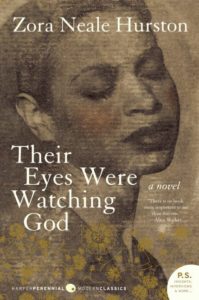
Zora Neale Hurston, Their Eyes Were Watching God (1937) : 194 pages
In 194 pages, Janie goes through more husbands than most literary heroines can manage in twice as many (and finds herself in equally short order).

Edith Wharton, Ethan Frome (1911) : 195 pages
To be honest with you, though it has been variously hailed as a masterpiece, I find Ethan Frome to be lesser Wharton—but even lesser Wharton is better than a lot of people’s best.
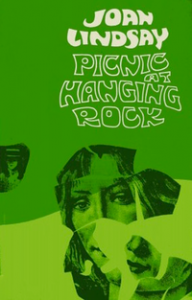
Joan Lindsay, Picnic at Hanging Rock (1967) : 198 pages
The mood this novel—of disappeared teens and Australian landscape and uncertainty—lingers much longer than the actual reading time.

Angela Carter, The Magic Toyshop (1967) : 200 pages
“The summer she was fifteen,” Carter’s second novel begins, “Melanie discovered she was made of flesh and blood.” It is that year that she is uprooted from her home in London to the wilds of America, and it is that year she comes to term with herself. “It is often the magical, fabular aspects of Carter’s stories that people focus on, but in The Magic Toyshop I responded to the way she blended this with a clear-eyed realism about what it was to live in a female body,” Evie Wyld wrote in her ode to this novel. “In a novel so brilliantly conjured from splayed toothbrush heads, mustard-and-cress sandwiches and prawn shells, bread loaves and cutlery, brickwork and yellow household soap, the female body is both one more familiar object and at the same time something strange and troubling.”
Emily Temple
Emily Temple is the managing editor at Lit Hub. Her first novel, The Lightness, was published by William Morrow/HarperCollins in June 2020. You can buy it here.


















